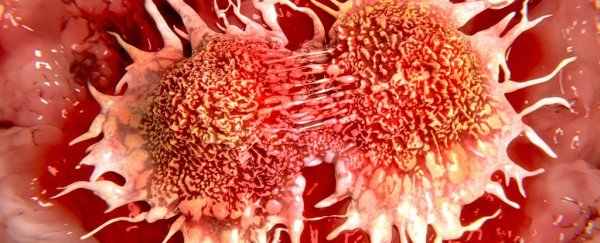Cancer is the ugly side of natural selection. While mutations are rarely good for individual organisms, the same can't be said for cells evolving out of control inside our bodies.
Researchers have now calculated some solid statistics on the kinds of mutations different cancers require to get going, finding on average it takes between one and ten mutations for a cell to go from resident to rebel.
A study headed by scientists from the Wellcome Trust Sanger Institute in the UK analysed more than 7,600 tumours representing 29 types of cancer to gain a better understanding of exactly what kinds of mutations turned them nasty.
They compared the kinds of genetic changes found in tumours with those in healthy tissues and between generations of individuals from different species.
At face value, the evolution of a species and the development of cancer have a fair bit in common.
Both are the result of variations copying themselves in larger numbers than others in their population, for example.
But the research highlighted one significant difference.
For individuals in any given species, mutations that result in some sort of physical change are either fairly neutral or problematic, risking the interruption of some biological process.
This kind of negative selection means mutations are more often bad news than good, so tend to be weeded out of a population.
On the other hand, individual cells in the body tend to tolerate mutations that would otherwise be disastrous if inherited on conception.
That tips the balance for most mutations in our bodies as positively selective, helping normally cooperative cells collect mutations and go rogue.
Mutated cancer causing genes, or oncogenes, are normally responsible for a variety of housekeeping tasks in healthy tissues.
Changes might super-charge their usual talents, making it hard for the body to keep the cell's replication under control.
Other genes that are usually responsible for suppressing this spread, called tumour suppression genes, can also fail through mutation, allowing otherwise cancerous cells reproduce unchecked.
While researchers have a fair sense of how cancers evolve in general and understand the roles played by many specific genes, there are still vast gaps in their knowledge concerning the combinations of oncogenes and tumour suppressing genes.
"We have addressed a long-standing question in cancer research that has been debated since the 1950s: how many mutations are needed for a normal cell to turn into a cancer cell?" says Peter Campbell from the Wellcome Trust Sanger Institute.
Researchers have developed a fairly hazy understanding by comparing the developments of different cancers at certain ages, reasoning that some tumours require a few more years to clock up enough mutations.
This is the first time precise numbers have been suggested. And for the most part they seem shockingly low.
"For example, about four mutations per patient on average drive liver cancers, whereas colorectal cancers typically require 10 or so driver mutations," says Campbell.
For your average Stage I thyroid cancer, a single mutation could be all it takes to drive the process.
By cataloguing the genes, the researchers were able to gain some insight into how far we've got to go to have a complete list of cancer-causing genes.
"In the study, we revealed that around half of these key mutations driving cancer occur in genes that are not yet identified as cancer genes," says researcher Inigo Martincorena from the Wellcome Trust Sanger Institute.
"There is already much insight into the most important genes involved in cancer; but there are many more genes yet to be discovered."
Thankfully research like this is giving us a good running jump into finding them.
This research was published in Cell.
